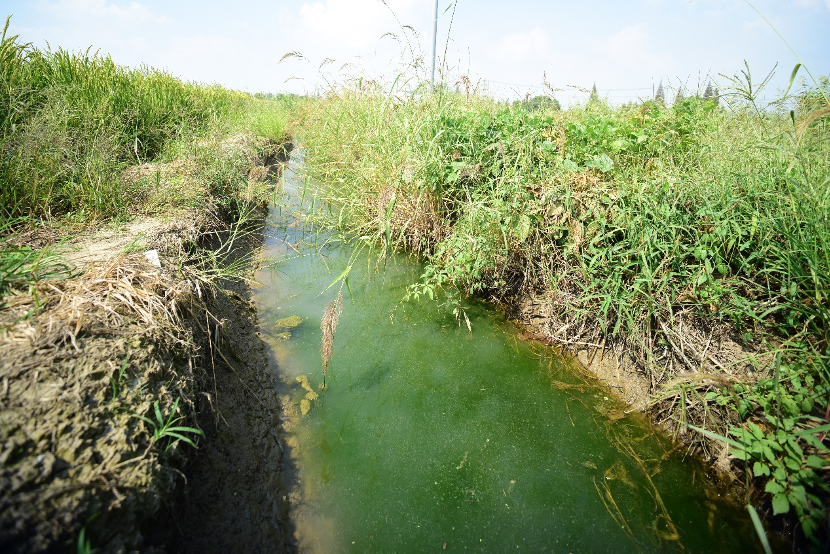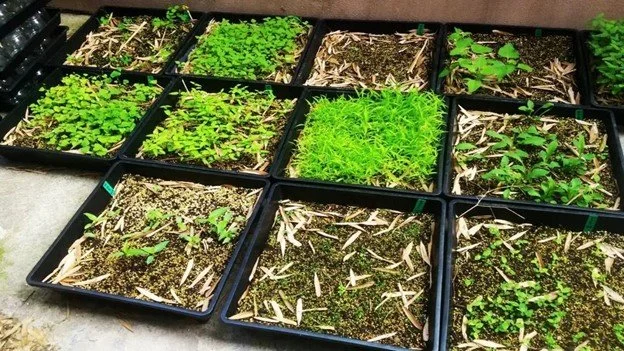Written by Li Zhuang and Bingqin Shan
China’s ecological restoration sector is expanding rapidly, however sourcing native plant materials remains a major challenge. While government-led greening projects operate at massive scales, the market for seeds and seedlings remains dominated by ornamental and exotic species. Commercial nurseries prioritize producing high-yield, visually appealing, and fast-selling plants. Peng, who works at a large nursery in the Yangtze River Delta managing millions of plants across Zhejiang and Jiangsu provinces, explains: “Nurseries prioritize uniformity and market demand. Biodiversity doesn’t sell”. Although some project developers and designers increasingly recognize the need for native species, their requests rarely create stable demand, so nurseries see little incentive to diversify.
Current propagation practices deepen the gap. Most plants in the nurseries are produced through cuttings or tissue culture to preserve desirable traits, creating vast clonal stocks with low genetic diversity that are vulnerable to pests and unsuitable for restoration. Seed propagation is rare in commercial nurseries, and when it occurs, genetic origin of these seeds is rarely traceable and often limited to just a few parent trees. Large nurseries usually collect seeds from their own cultivated stock, restricting the gene pool to plants already in the nursery. Smaller nurseries, lacking the time and resources to wait for trees to mature and bear fruit, often collect seeds from the wild instead. However, these collections usually come from a single site, without consideration for the ecological impact of harvesting or the need to preserve genetic diversity. As Chinese regulations do not require suppliers to disclose seed sources, this challenge remains unsolved. Meanwhile, national research institutions maintain extensive germplasm collections, but these resources remain confined to scientific use rather than practical restoration. This fragmented supply chain fails to deliver genetically diverse, locally adapted plant material at scale.
Urbanization compounds the problem. Germplasm surveys and collections for seed banks are often concentrated in protected areas with relatively good natural conditions, leaving highly urbanized areas underrepresented. However, many restoration projects in the Yangtze River Delta are located in highly urbanized areas. In this case, many important native plant species have become critically endangered or locally extinct, even in nearby rural or mountainous areas. This situation increases the difficulty of sourcing native seeds for restoration. Taoran Guo, founder of Forest City Studio, argues that collecting seeds from these remnants is essential to preserve the genetic diversity of urbanized regions. Despite this urgency, such plant populations are typically small and scattered, making systematic collection and propagation even more difficult.
Forest City Studio, a social enterprise based in Shanghai, began collecting native seeds after failing to source suitable plant material for their local restoration projects. Each year during seed maturation, they conduct multiple rounds of collection across the city, prioritizing sites with minimal disturbance and confirmed historical presence. To date, they have gathered seeds from 46 wild annual herbaceous species, 38 perennial herbaceous species, and 23 species of trees and shrubs.
Figure 1 A member of Forest City Studio collecting Patrinia villosa seeds.
Figure 2 Native plant seeds collected by Forest City Studio.
Urban conditions make the collection exceptionally difficult. Best practices recommend collecting from large, genetically diverse populations and preventing overharvesting to protect wild populations (Basey et al. 2015). However, in Shanghai, remnant habitats often contain only a handful of individuals. One case involved Ottelia alismoides, a native aquatic plant once common in Shanghai’s wetlands. It depends on clear, flowing streams and ditches, habitats now lost to channel hardening and urbanization. Guo’s team initially found only one individual in an irrigation canal in Cenbu Village, Qingpu District in Shanghai, and later discovered ten more in nearby villages. However, these ten grew closely together, making it highly likely that they originated from a single individual, which means their genetic diversity could be very limited. “With habitats gone, finding even one plant is considered lucky,” notes Guo.
Figure 3 Ottelia alismoides, now listed as a national Class II protected species. After collection, it is propagated by Forest City Studio for use in small-scale wetland restoration projects.
Figure 4 Ottelia alismoides was collected by Forest City Studio in Qingpu District, Shanghai. The plant grows in farmland irrigation ditches, habitats that are often subject to human disturbance.
The constraints do not end with seed collections. Forest City Studio’s propagation process is limited by both manpower and space, which often results in compromising genetic diversity. In practice, the team selects only early-germinating seedlings for cultivation, discarding trays containing ungerminated seeds. This approach overlooks the ecological value of staggered germination, which allows plant populations to hedge against environmental risks such as late frost or predation (Basey et al. 2015). Although preserving late-germinating seeds could preserve genetic diversity, doing so requires additional labor and time with uncertain yields. As a result, part of the genetic diversity within wild seed populations is lost before restoration even begins.
Figure 5 Seeding and seedling cultivation of native plants at Forest City Studio.
Preventing cross-pollination among seedlots in production is another challenge. Although the suggested separation distances are at least 100 meters for animal-pollinated species (Van Rossum and others 2011) and over 200 meters for wind-pollinated species to prevent hybridization (Robledo Arnuncio and Gil 2005). In reality, small-scale restoration organizations, like Guo’s nursery, lack the space, labor and resources to implement such measures. Moreover, in highly urbanized areas, wild populations are so sparse that the quantity of seeds collected from any single site is often insufficient for establishing isolated production beds. Both limited capacity and limited seed availability make strict spatial isolation infeasible.
Guo emphasizes that seed collection is only the beginning. Restoration in Yangtze River Delta region requires long-term trials to identify resilient species combinations and community dynamics. He envisions a future where seed banks, nurseries, land managers, and practitioners form an integrated system to support ecological restoration in Chinese cities.
Literature Cited
Basey, A. C., Fant, J. B., & Kramer, A. T. 2015. Producing native plant materials for restoration: 10 rules to collect and maintain genetic diversity. Native Plants Journal 16(1): 37–53
Robledo-Arnuncio JJ, Gil L. 2005. Patterns of pollen dispersal in a small population of Pinus sylvestris L. revealed by total-exclusion paternity analysis. Heredity 94(1): 13–22
Van Rossum F, Stiers I, Van Geert A, Triest L, Hardy O. 2011. Fluorescent dye particles as pollen analogues for measuring pollen dispersal in an insect-pollinated forest herb. Oecologia 165(3): 663–674





